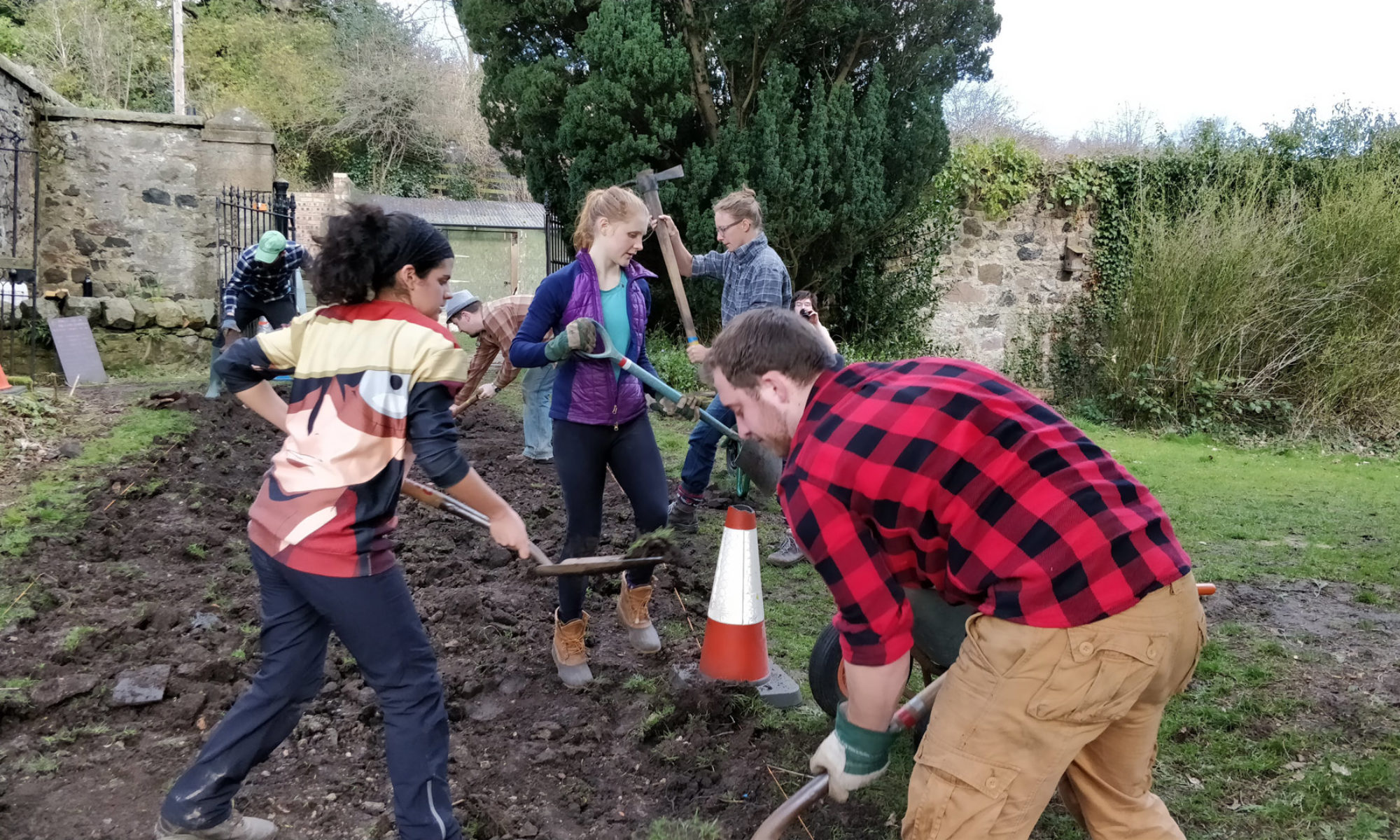Last month, instead of the usual project fare, the Dirts headed to Craigmillar Castle Park in the South of Edinburgh to learn about winter tree identification. The course was run as part of the RSPB’s Young Roots Project, which the Dirties have been involved with for about a year and a half now.
Identifying tree species in the winter is quite a skill and requires much keener observation than in the Summer. In the winter, broadleaf trees generally lose their leaves, flowers and fruit, all things that we usually rely on to ID the tree, meaning we have to look for more subtle signs. Given that the Dirts do most of their tree-felling and pruning in the winter months, it’s a useful skill for us to have.
We started our day at Bridgend Farmhouse where we met Amber, our guide for the morning and began our tour with some staples of the British countryside, the wych elm (Ulmus glabra) and the sycamore (Acer pseudoplatanus). Both of these can be identified by looking at their buds, which are out for most of the winter season. Sycamores form bulbous green buds with alternating scales, resembling a fat beetle in my eyes, while wych elm buds are decidedly more round and red in colour.

We moved onto some other key species of British woodlands and learnt their distinctive features. The silver birch (Betula pendula) can be identified by its bark, the pedunculate oak (Quercus robur) and European beech (Fagus sylvatica) by its distinctive leaves that often stay on the tree, and the hawthorn (Crataegus monogyna) by its fruit and fruit stalks.

We found that the more we paid attention to the trees and our surroundings, the more our collective minds dredged up little snippets of information about the species and all of us became teachers. Birch bark makes a great tinder, yew trees play an important role in folklore, elder bush branches can be fashioned into flutes, etc..
As our eyes became more attuned to what had become a treasure hunt for interesting specimens we came across remnants from when Craigmillar Park was a private garden in the early 1900s. We found what we think was a himalayan pine with long soft needles and a patch of some sort of bamboo, which both stuck out against the mostly leafless woodland.
We sat at a park bench and got out a load of books and put our new ID skills to the test with some twigs that Amber had gathered from Kelvin Grove in Glasgow, helped along by biscuits and penguin-huddling to stave off the cold. Many were species that we had seen that morning but many more were exotic species, a reminder of how integral people are to cultivating our woodlands, especially in urban areas.

I think we all learned a lot on our morning botanical excursion, and it certainly showed how interesting woodlands can be when you pay more attention.
__Here are some links to help you start identifying trees in the winter:__
Woodland Trust Nature Detectives Twig ID sheet
Paul Kirtley’s blog post on winter tree ID
